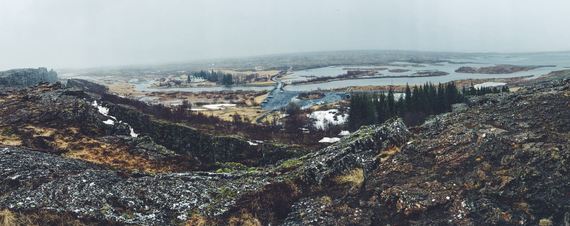By Marisa Sashti
335,000 people. 40,000 square miles. 170 geothermal pools. Combined, these numbers comprise Iceland, a country that is much more than the barren lands filled with frozen water many Americans imagine. About the size of Kentucky, Iceland is shaped by a unique landscape of glaciers and volcanoes - hence its nickname, the land of ice and fire - and it is the only country in the world that generates 100 percent of its energy through renewable and sustainable initiatives - a goal the U.S. lags far behind on. Harnessing the heat from the Earth's inner core, Iceland is able to heat 99 percent of its homes, making geothermal energy the nation's secret to energy conservation. In addition, the Icelandic peoples' mentality around conservation -- highlighted by the country's extensive national park system -- positions the country as one of the foremost leaders in the green energy revolution.
In March 2016, students from around the world traveled to Iceland with EF Education First to participate in this year's Global Student Leader Summit and witness Iceland's innovations across the country's varied landscape. In the Southern city of Vík, waterfalls roared as they harness hydroelectricity. Even further south in Hella, a geothermal greenhouse provides heat to grow fresh tomatoes. Iceland has become an expert in the practical use of their natural resources -- each year, the nation generates about 7,100 megawatts from hydropower and 2,000 gigawatt hours from geothermal implementation.
Ryan, a sophomore from Arlington, Virginia, was in awe at the natural wonders. "I love that all the Icelanders here have such a sense of pride, because of their ability to use renewable energy," he said. "To be honest, I think I would too if my country was completely sustainable."
Elin Perla Stefansdottir, a college student in Reykjavík, commented on her country's stability by referencing a motto that Icelanders live by: "Society without waste."
"Energy is really important, and limited, and we have to use it wisely," she added. This essential perspective changes the conversation from questioning whether and when a resource will run out to understanding a single resource's impact on the individual, the community, and the Earth as a whole.
"I've never seen a country that has such respect for the natural environment," said Nisha, a high school junior student from Virginia.
But how can the U.S. use Iceland as a model? Speakers at the Summit spoke about exactly that. In one talk, Icelandic President Ólafur Ragnar Grissom highlighted the country's independence from fossil fuels, and pointed out that even Mozambique and Paraguay score higher in terms of renewable energy than the United States. "If they're ahead, why can America not do better?" he joked.
That isn't beyond the realm of possibility for the U.S. Grissom went on to say that if the United States were to harness all of its geothermal power capabilities, it would produce two times the amount of energy that Americans already use.
Grissom's talk shed light on the U.S.'s need to further energy efficiency efforts. As of 2013, 90.5 percent of our country's energy came from fossil fuels, while only 9.52 percent came from renewable energy. Although the U.S. does not currently harness geothermal energy efficiently enough to merit its use, the potential is apparent. The geysers in California host the largest grouping of geothermal power plants in the world. And it doesn't stop with California's geysers - the U.S. boasts several other untapped sources of renewables, should they decide to confront climate change through renewable energy sources, including regions with great wind power and solar potential.
But this change will not come easily. First, Americans must accept the consequences of fossil fuel use and change, much in the way Iceland was once forced to. After witnessing the effects of coal mining on their communities, Icelanders took it upon themselves to convert their way of life. Grissom spoke of his own teenage years, a time when his country was 80 percent dependent on foreign oil. Just one generation later, the country has made a whole-hearted shift towards renewables.
With the recent Paris COP21 climate talks, the world is clearly beginning to understand the urgency in addressing climate change. As a teenager, people my age can also play a role in a sustainable energy future. Not only do we have the time and ability to make a change -- our future depends on it.
For now, we could begin by taking a few hints from a country that has already made its mark -- or rather, that hasn't left a trace at all.
Marisa Sashti is a high school junior from Tennessee
This post is part of a series produced by The Huffington Post and EF Educational Tours about the recent EF Global Student Leaders Summit, which explored the future of energy from Iceland. The Summit Series combines educational travel with a two-day leadership conference, and asks students to tackle global challenges in places where those challenges are notably present or well-addressed. To view all posts in the series, visit here.

